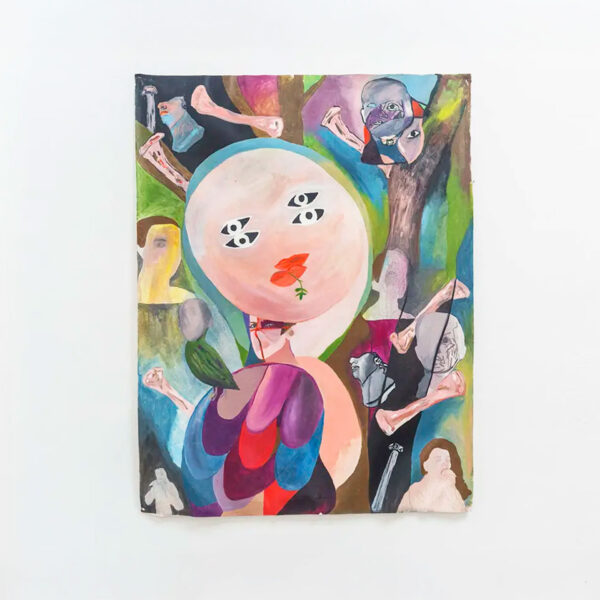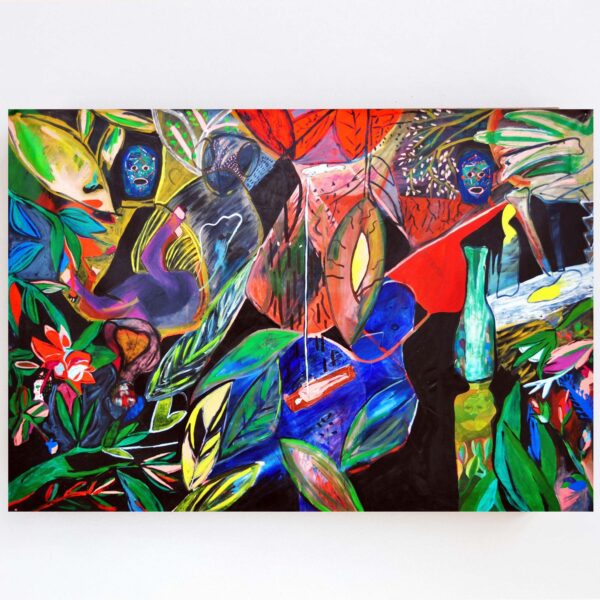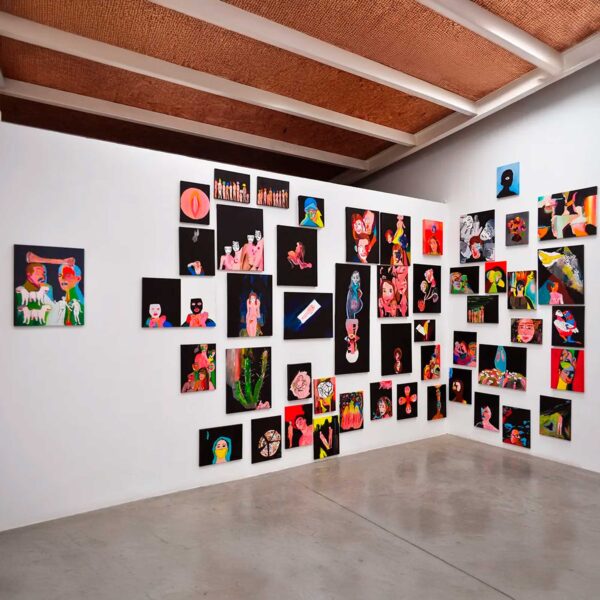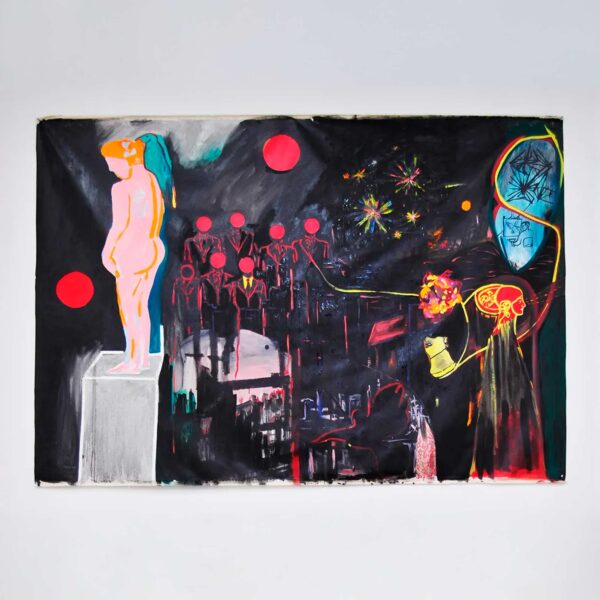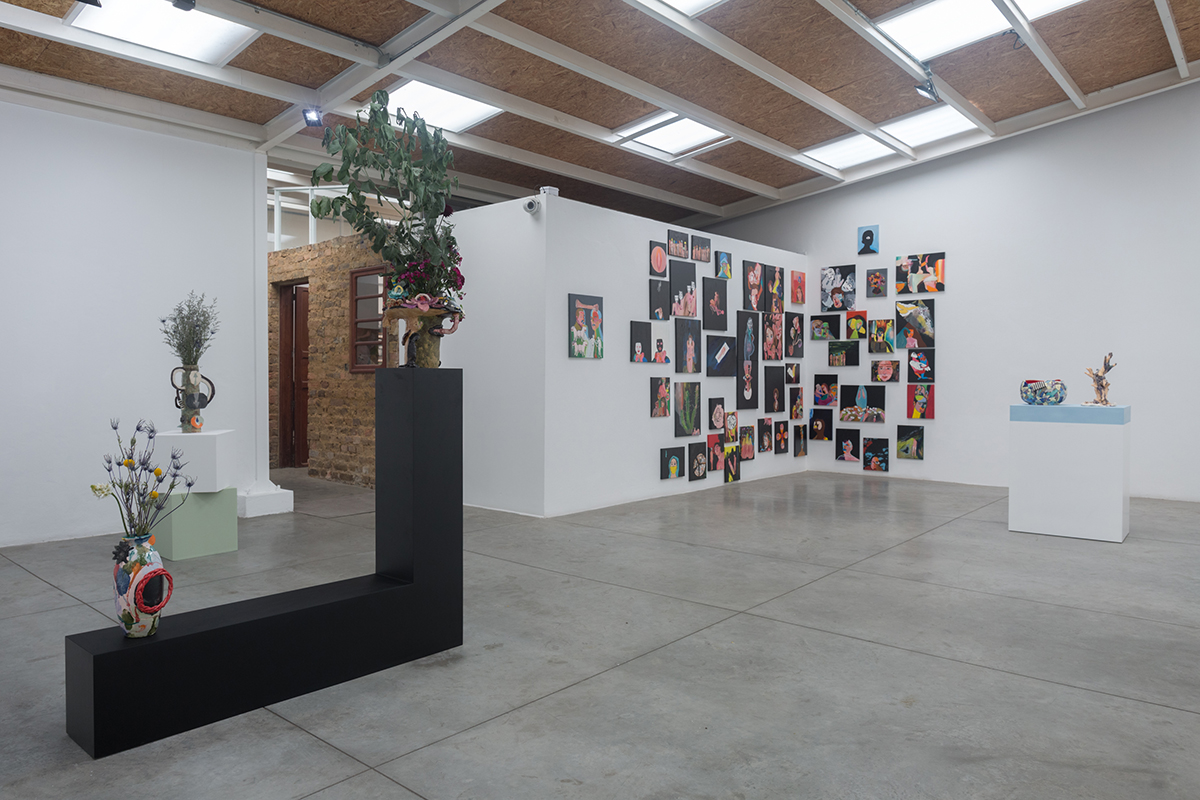
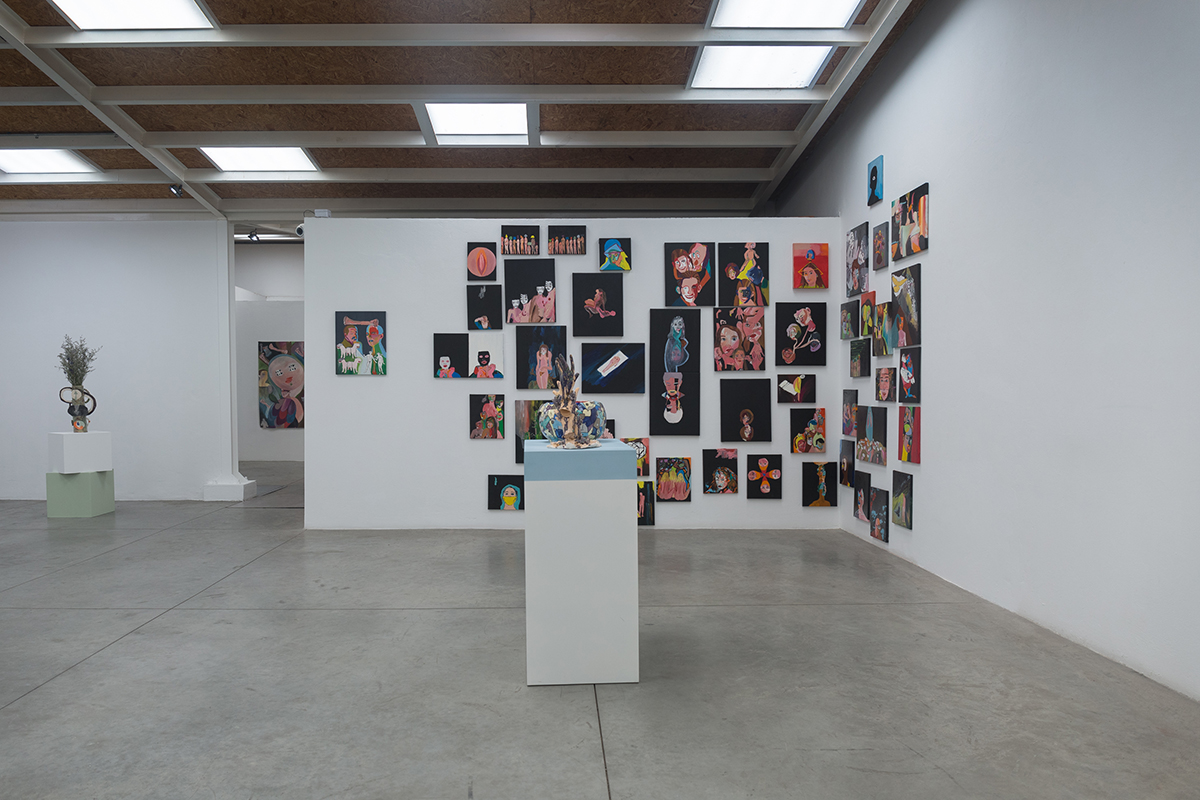



Bestias sin nombres
Bestias sin Nombres exhibition brings together the work of three Latin American artists whose practices play across the boundaries of classical forms to examine art history, the tools of power, and the resources of personal and collective memory. Manuela Viera Gallo focuses on her own dream imagery, Milena Muzquiz proposes a reading of the legacy of ceramics in the construction of history, and Juliana Góngora explores fundamental notions such as femininity and nature through everyday elements.
Beasts without Names brings together the work of three Latin American artists whose practices are characterized by working between the limits of classical art mediums, such as painting or sculpture. Through this they examine the history of art, the tools of power and the resources of personal and collective memory.
Manuela Viera Gallo’s work has addressed anti-capitalist currents and revealed the adversities of military dictatorships in South America in the 70s and 80s. In Beasts without Names she surprises and thrills with a work that focuses on her own dream imagery that recalls the strength of women, such as Leonora Carrington, Tarsila do Amaral or Remedios Varo, who revolutionized the history of art from their powerfully intimate world.
Milena Muzquiz has explored various artistic practices and media, ranging from music, theater and fashion design. For Beasts without Names she proposes a reading of the legacy of ceramics in the construction of History. In pre-colonial civilizations ceramics were not seen as having solely utilitarian needs, but they also possessed a wider poetic universe, allowing ancestral societies to leave behind legacies and instructions that have been maintained over time, and that work as contemporary documents that surpass the decorative or clichés of what is considered as “native.”
Juliana Góngora, the youngest artist of this group, explores fundamental notions such as femininity, communication, fragility and nature: from elements that go unnoticed in everyday life due to the accelerated pace that this demands. Materials such as spiders, stones, sand or salt are engaged in a practice that alters temporality, and from this action different forces are derived that alter the perception of the observer. Conversely, these materials in Góngora’s work allude to a dimension that is rich in symbolism and on the other hand, to a personal world linked to the family lineage that remains, which is evident in their relation to nature and history.
The work that is exhibited by Viera Gallo, is a recent series of paintings titled “La Noche de los tiempos”. With this body of work she aims, through painting, to enter the dark jungle of her universe: creatively infected by the visual chaos of New York City. The symbols, archetypes and constants that multiply in these works reveal the shadows that sprout from the origin of their practice, and in their more personal and intimate existence.
The way in which Milena Muzquiz approaches her work with clay is particular, in that it arises from experience and transcends formal techniques to create objects that are split between the useful and the aesthetic. From narratives that draw on sources as real as anarchist or popular discourses, such as comics, the artist projects a unique way of generating history, in which multiple discourses and dissonances are welcome.
Juliana Góngora’s videos are the record of very subtle actions where the body is presented through the subtlety of breath, the fragility of balance or the unease that physical discomfort gives an image to silence.
Bogotá
Carrera 23 # 76-74
Barrio San Felipe, Bogotá
Tel. +57 (60) 1 3226703
Lunes a Viernes
10:00 am a 05:30 pm

